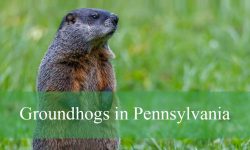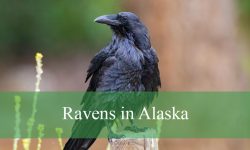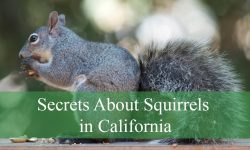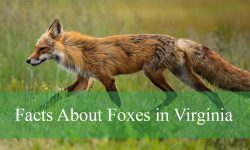Kangaroos are some of the most iconic animals in the world, instantly recognizable for their powerful hind legs, large tails, and the distinctive pouches that carry their young. Native to Australia, these fascinating marsupials are famous for their ability to hop great distances and their unique way of moving across vast landscapes. Their presence in the wild is one of the most remarkable sights in nature.
But beyond their physical characteristics and impressive agility, kangaroos are also highly social animals. They often gather together in open grasslands, creating an incredible display of group behavior. Many people observing them for the first time often ask the question, “What Is a Group of Kangaroos Called?” The answer is more interesting than you might expect and reveals much about their way of life.
Understanding what a group of kangaroos is called not only provides you with a fun wildlife fact but also helps you appreciate their fascinating social structure. Their group behavior plays an important role in survival, communication, and even the balance of Australia’s ecosystems. Learning about this unique aspect of kangaroos offers a deeper insight into the life of these extraordinary animals.
What Is a Group of Kangaroos Called?
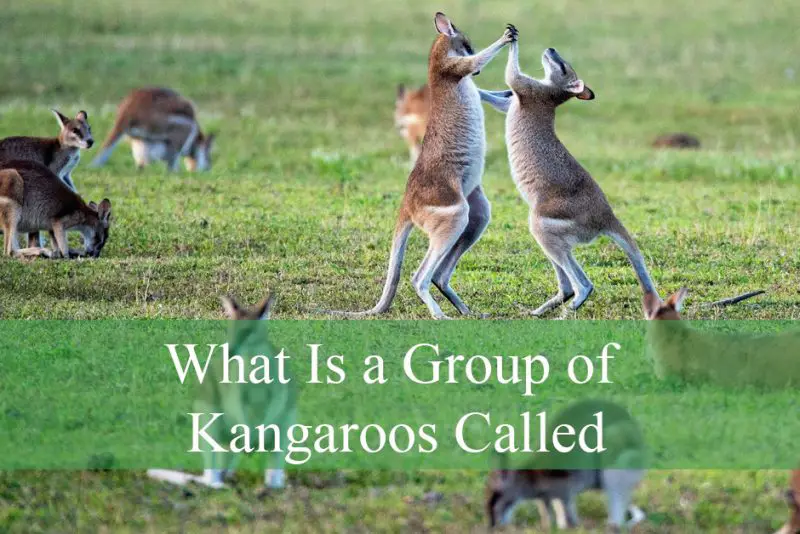
A group of kangaroos is commonly called a “mob.” This term perfectly captures the way these animals behave when they gather, as their movements can appear almost like a coordinated crowd shifting across the open plains. While “mob” is the most widely used and accepted term, other words such as “troop” or “court” have occasionally been used in older texts or by wildlife observers. However, if you are speaking about kangaroos in modern English, “mob” is the correct and universally understood term.
The size of a mob can vary greatly depending on the species of kangaroo, food availability, and environmental conditions. Some mobs may consist of only a few individuals, while others can gather in larger numbers, especially in areas where resources are plentiful. This social behavior serves more than just companionship; it plays a crucial role in the kangaroo’s survival, protection, and reproduction.
Why Do Kangaroos Form Mobs?
Kangaroos form mobs for several important reasons, with safety being one of the primary factors. As herbivorous animals that graze in open grasslands and savannas, kangaroos are vulnerable to predators such as dingoes and large birds of prey. Living in a mob provides them with collective security. Multiple individuals can remain vigilant, scanning their surroundings for danger, which increases the chances of detecting predators early. When one kangaroo senses a threat, it can quickly alert the rest of the group, allowing them to hop away to safety.
Social interaction is another key reason kangaroos live in mobs. These marsupials are naturally social creatures, and the mob structure allows them to establish social bonds, maintain mating opportunities, and nurture their young in a safer environment. Female kangaroos, known as does, often remain in the mob with their young joeys, while males, called bucks or boomers, join or leave the group depending on the season and breeding cycles.
Food availability also influences mob formation. Kangaroos are grazing animals that feed on grasses, leaves, and shrubs, and they often move to areas where vegetation is abundant. Staying in a group helps them find better feeding grounds, and the mob’s movement can even stimulate grass regrowth, benefiting the environment in a natural cycle.
The Social Structure of a Kangaroo Mob
The social hierarchy within a mob is fascinating and often determined by dominance. Male kangaroos compete for dominance, especially during mating seasons. The most dominant male, often referred to as the “alpha male” or “old man kangaroo,” gains priority access to mating opportunities with females. This hierarchy is established through physical contests where males engage in boxing-like fights, using their strong forearms and powerful hind legs to wrestle and kick their opponents.
Despite these occasional displays of aggression, mobs are generally peaceful, with members grazing, resting, and moving together harmoniously. Females and their young make up the majority of the mob, and the social bonds among mothers and joeys are particularly strong. Older females often guide younger ones to feeding areas, and joeys learn survival skills by observing and mimicking adult behavior.
The mob is not a permanent, tightly organized unit. Members may join or leave depending on food supply, breeding opportunities, and environmental conditions. However, dominant males and family groups often stay in familiar territories, creating a relatively stable social network over time.
Do All Kangaroos Live in Mobs?
Not all kangaroo species live in large mobs year-round. The mob structure is more common among species that inhabit open plains, where visibility and safety in numbers are crucial. Red kangaroos, the largest species, are famous for forming large mobs that can sometimes include dozens of individuals. Eastern and western grey kangaroos also commonly gather in mobs, especially in grazing areas with abundant food.
On the other hand, some smaller kangaroo species, such as wallabies and tree kangaroos, tend to be more solitary or live in smaller family groups. Their habitat preferences, often dense forests or mountainous areas, reduce the need for large group living since vegetation offers natural cover from predators.
Seasonal changes also influence mob behavior. During dry seasons, kangaroos may gather in larger groups near scarce water sources, whereas in wetter months, they might spread out more widely to take advantage of fresh vegetation.
Communication Within a Mob
Communication plays an essential role in the functioning of a kangaroo mob. These animals use a combination of body language, vocalizations, and physical gestures to exchange information. One of the most recognizable signals is thumping, where a kangaroo forcefully hits the ground with its hind legs to warn others of approaching danger. This sound can travel a considerable distance across the open plains, alerting other members of the mob to potential threats.
Vocalizations also occur, particularly between mothers and joeys. Soft clicking, coughing, or hissing sounds can be heard during close interactions. Mothers communicate with their young through gentle clicking noises, helping reassure the joey when it is outside the pouch. Males, especially during fights or mating contests, may growl or make guttural sounds to intimidate rivals.
Body language is equally important. A raised posture, intense staring, or a lowered head can all indicate readiness to fight or signal dominance. These nonverbal cues help maintain social order and reduce unnecessary physical confrontations within the mob.
The Benefits of Living in a Mob
Living in a mob provides multiple benefits for kangaroos beyond safety from predators. Group living allows for better protection of young joeys, as mothers can collectively keep watch while grazing. Older, more experienced kangaroos can lead the mob to reliable feeding grounds or water sources, which is particularly crucial in arid Australian environments.
Social interaction within the mob also improves breeding success. Dominant males can easily access multiple females, ensuring the continuation of strong genetic traits within the population. For females, remaining in a mob increases the chances of raising healthy joeys since group vigilance provides additional security.
Another benefit is energy conservation. Kangaroos often rest and graze together, and by moving as a group, they can reduce the need for constant individual alertness. This energy-saving strategy is essential, especially in harsh climates where resources can be limited.
Fascinating Facts About Kangaroo Mobs
One of the most intriguing facts about kangaroo mobs is their flexible social structure. Unlike some animal groups that have strict territorial boundaries, kangaroo mobs are fluid, allowing individuals to join and leave freely depending on conditions. This adaptability helps them survive in Australia’s often unpredictable climate.
The leadership within a mob is not permanent. While dominant males hold their status through strength and fighting ability, they can be challenged and replaced at any time. Younger males continually test older ones, and the outcome of these contests can shift the mob’s social dynamics quickly.
Kangaroo mobs also contribute to their ecosystem. By grazing in groups, they help manage grassland growth, preventing overgrowth that could lead to wildfires. Their movement spreads seeds, encouraging plant diversity across the landscape. In this way, mobs are not only social structures but also important ecological contributors.
Seasonal Behavior of Kangaroo Mobs
The size and behavior of kangaroo mobs change with the seasons. In the dry season, food and water become limited, causing mobs to concentrate near permanent water sources or lush grazing areas. These larger gatherings improve survival chances as collective vigilance becomes critical when resources are scarce.
During the wet season, when vegetation is plentiful, mobs often break into smaller groups or individuals spread out over larger areas. This dispersal reduces competition for food and allows joeys to grow in less stressful conditions. Breeding activity often increases after good rainfall, leading to noticeable changes in mob dynamics as males become more competitive for mating opportunities.
Understanding this seasonal variation provides valuable insights into how kangaroos adapt to Australia’s diverse and sometimes harsh environment. Their ability to adjust mob size and structure according to seasonal changes is one of the reasons they have thrived for thousands of years.
Why Knowing the Term “Mob” Matters
Learning what a group of kangaroos is called may seem like a simple curiosity, but it reflects a deeper understanding of these remarkable animals. Using the correct term, “mob,” connects you to a broader knowledge of their behavior and social organization. For wildlife enthusiasts, photographers, or students, accurately describing animal groups helps improve communication and appreciation for the species.
It also emphasizes the importance of conservation. Kangaroos depend on their social structures for survival, and human activities such as habitat destruction and land clearing can disrupt these natural behaviors. Understanding how mobs function encourages greater respect for preserving their habitats, ensuring that future generations can continue to witness these incredible animals in their natural environment.
FAQs About What Is a Group of Kangaroos Called
What is the proper term for a group of kangaroos?
The correct and most widely accepted term for a group of kangaroos is “mob.” Other terms like “troop” or “court” exist but are rarely used today.
Why do kangaroos live in mobs?
Kangaroos live in mobs for safety, social interaction, and better access to food. Living in a group allows them to detect predators early and protect young joeys.
Do all kangaroo species form mobs?
Not all kangaroo species live in large mobs year-round. Red kangaroos and grey kangaroos form mobs frequently, while species like wallabies often live in smaller groups or alone.
Who leads a kangaroo mob?
The dominant male, often called the “alpha male” or “old man kangaroo,” usually leads the mob during mating seasons. Females, however, guide joeys and younger kangaroos to food sources.
How many kangaroos are in a mob?
The size of a mob varies depending on food availability and species. Some mobs consist of only a few individuals, while others can include dozens in areas with abundant resources.
Conclusion
So, what is a group of kangaroos called? The answer is a mob, a term that perfectly describes the lively and social nature of these iconic Australian animals. More than just a fun piece of trivia, understanding the concept of a mob offers valuable insight into kangaroo behavior, from their complex social hierarchies to their seasonal migrations and communication methods.
Kangaroo mobs are not only fascinating to observe but also play an essential role in maintaining the balance of Australia’s ecosystems. By learning more about how they live, communicate, and survive in groups, we gain a deeper appreciation for their adaptability and resilience. The next time you see a group of kangaroos hopping gracefully across the grasslands, you’ll know you are watching a mob—an extraordinary community of one of nature’s most unique creatures.

